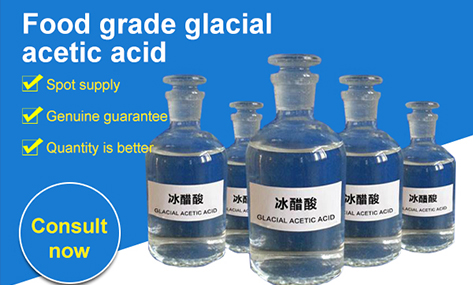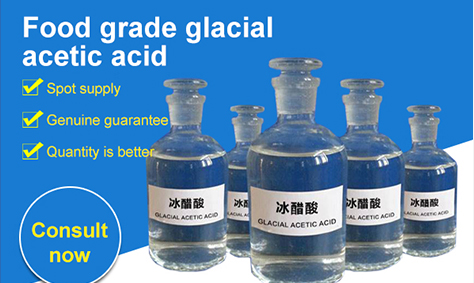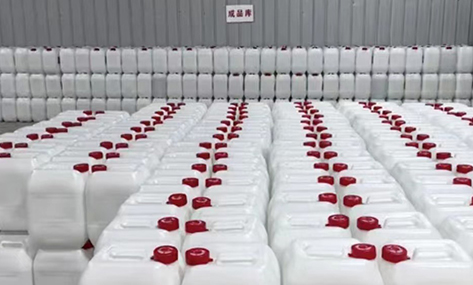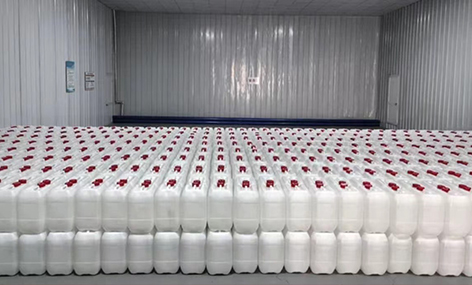
Aug . 04, 2025 06:00 Back to list
High-Purity Glacial Acetic Acid for Sale | Fast Shipping
Discover cutting-edge glacial acetic acid for sale: explore the manufacturing process, industry applications, technical specifications, supplier landscape, and tailored solutions for petrochemical, metallurgy, water treatment and more. Certified by ISO, ANSI, and aligned with global safety and quality standards.

Glacial Acetic Acid Industry Trends & Market Overview (2024)
- Global Market Growth: Estimated CAGR of 5.7% (2023-2028), driven by surging demand in plastics, solvents, and chemicals (Source).
- Standardization: Adherence to international standards such as ISO 9001, ANSI, FDA and NFPA for safety and quality.
- Key Applications: Petrochemical intermediates (vinyl acetate monomer), pharmaceuticals, food preservatives, water treatment, metallurgy, and laboratory use.
- Supplier Concentration: Major suppliers: Celanese, Eastman, YSXL, BP Chemicals, LyondellBasell, and China-based high-purity manufacturers.
- Technical Trend: Shift toward more energy-efficient, low-emission production routes (carbonylation and biological pathways).
What is Food Grade Glacial Acetic Acid?
Glacial acetic acid is the anhydrous (water-free) form of acetic acid (CH3COOH), achieving ≥99.8% purity. Food grade glacial acetic acid is specially purified to meet strict food-safety and pharmaceutical standards, widely used as an acidity regulator (E260), pickling agent, solvent, and intermediate.
| Parameter | Industrial Grade | Food Grade (YSXL) | USP/NF |
|---|---|---|---|
| Purity (%) | ≥99.5 | ≥99.8 | ≥99.7 |
| Water Content (%) | ≤0.7 | ≤0.2 | ≤0.3 |
| Iron (ppm) | ≤0.3 | ≤0.1 | ≤0.1 |
| Color (Pt-Co) | ≤10 | ≤5 | ≤5 |
| Heavy Metals (ppm) | ≤1.0 | ≤0.5 | ≤0.5 |
| Acetaldehyde (ppm) | ≤10 | ≤5 | ≤5 |
| Compliance | ISO, GB | ISO, FDA, E260 | USP-NF |
Manufacturing Workflow: Glacial Acetic Acid for Sale

- Raw Material Selection (Methanol/Natural sources)
- Carbonylation (Monsanto/Cativa process): Methanol reacts with CO in presence of catalyst (Rh/Ir complexes)
- Chemical Distillation: Removes water and impurities
- Dehydration (Azeotropic/Pressure-swing Distillation): Achieves anhydrous (glacial) purity >99.8%.
- Chemical Polishing: Trace organics and heavy metals are removed via advanced chromatography and carbon filtration.
- Quality Inspection: Rigorous batch testing (ISO, ANSI, FDA)
- Packing & Storage: Stainless steel (316L or lined), IBC/drums, strict moisture/temperature protection
- Shipping: Compliant with NFPA 30, ADR, IMDG, and FDA regulations for hazardous chemicals
Key Technical Parameters of Food Grade Glacial Acetic Acid (YSXL)
- Formula: CH3COOH (CAS No.: 64-19-7)
- Purity: ≥99.8% (water content ≤ 0.20%)
- Appearance: Clear, colorless liquid or crystals at <17℃; sharp vinegar-like odor
- Melting Point: 16.6℃ (freezes to solid "glacial" mass)
- Boiling Point: 118.1℃ | Density: 1.049 g/cm³ (20℃)
- NFPA Rating: Health 3; Flammability 2; Reactivity 2 (NFPA reference)
- Certifications: ISO 9001, HACCP, FDA (E260), USP/NF, Kosher/Halal available
- Packaging: 1L, 5L, 30L, 200L drums, 1000L IBC, ISO tank, SS-316 lined container111s

Supplier Comparison: Glacial Acetic Acid for Sale (Global Benchmarking)
| Supplier | Origin | Grade & Purity | Certifications | Typical Price (FOB, USD/MT) | Lead Time |
|---|---|---|---|---|---|
| YSXL | China | Food/Pharma, ≥99.8% | ISO, FDA, Kosher, Halal | 540-650 | 7-12 days |
| Celanese | USA | Industrial/Food, ≥99.7% | ISO, ANSI, NFPA | 980-1100 | 3-5 weeks |
| Eastman | USA | Industrial, ≥99.5% | ISO, NFPA, REACH | 840-960 | 2-4 weeks |
| LyondellBasell | EU/USA | Industrial, 99.5% | ISO, REACH | 850-920 | 3-6 weeks |
| BP Chemicals | UK | Industrial, 99.7% | ISO, NFPA | 900-980 | 4-7 weeks |
| China Chem (Generic) | China | Industrial, 99.5% | ISO, GB | 480-600 | 8-15 days |
Material, Process, and Industry Applications
Material & Processing
- Raw Material: Methanol, CO, or natural fermentation sources (corn, sugar, molasses)
- Manufacturing: Patent carbonylation (Monsanto/Cativa), advanced distillation, stainless steel lined reactors (316L) for enhanced anti-corrosion and product purity.
- Technology: Integration of CNC for inline monitoring, and multi-stage filtration (activated carbon, resin beds).
- Quality Control: Batch testing in ISO/IEC 17025 certified labs; purity confirmation by gas chromatography, ICP-MS (metals).
- Compliance: FDA CFR§184.1005 (food use), NFPA, REACH, HACCP critical control.
- Service Life: Stable in sealed steel or HDPE container111s for 12-24 months.
Key Application Industries
- Petrochemical: VAM, PTA, acetate esters, solvent production
- Metallurgy: Pickling, scale removal, corrosion inhibitor feedstocks
- Water Treatment: pH regulation, disinfection precursor, antifoulant
- Food: Preservative (E260), acidifier, flavor enhancer
- Pharmaceuticals: Extraction, synthesis of vitamins, antibiotics
- Laboratory: Buffer solutions, analytical reagents

Tailored Solutions & Application Case Studies
-
Custom Purity Adjustment: For an EU food-processing client, YSXL supplied glacial acetic acid adjusted from 99.8% to 99.9% with aldehyde ≤2ppm and iron ≤0.07 ppm, ensuring compliance with E260 and FDA CFR.
Feedback: “Batch-to-batch stability and transparent documentation made our audit pass seamlessly.” - Corrosion-Resistant Packaging: For Middle East petrochemical engineering, product delivered in 316L stainless ISO tanks reduced acid corrosion and site wastage by 37%.
- Rapid Lead Time: YSXL delivered 4x40HQ food grade shipments to a US condiment brand in 12 days, with full COA, SDS, and FSMA traceability.
- Energy Savings: Clients cited use of CNC-controlled batch distillation and double-layer insulation allowed for a 13% energy reduction vs. conventional methods.
Certifications, Quality Assurance & Industry Partnerships
- Certifications: ISO 9001 (quality), FDA (E260), HACCP, Kosher/Halal; NFPA, ANSI for safety/storage.
- Lab Accreditation: Tests performed in ISO/IEC 17025-accredited labs.
- Service: 18+ years in production, global partner network in >48 countries, annual export >20,000 MT.
- Compliance Assurance: Documentation (COA, TDS, SDS) provided with every shipment; batch traceability (FSMA, ISO 22005).
- Cooperation Brands: Coca-Cola, PepsiCo co-packers, Unilever (Asia), regional beverage giants, and pharmaceutical intermediates producers.
- 3rd Party Testing: SGS, Bureau Veritas, Intertek available upon request.

Expert Technical FAQ: Glacial Acetic Acid
- Q1: What is the difference between glacial acetic acid and anhydrous acetic acid?
- Glacial acetic acid specifically refers to acetic acid (≥99.8% purity) that is essentially water-free (anhydrous). All glacial acetic acid is anhydrous, but "anhydrous" acetic acid in commercial specs may sometimes contain small amounts of water (≤0.5%). For food/pharma, only glacial (NF, FCC, ISO, FDA E260 compliant) is used.
- Q2: What does the NFPA rating for glacial acetic acid mean?
- The NFPA diamond rates glacial acetic acid at Health 3 (major risk), Flammability 2 (must be preheated), Reactivity 2 (violent chemical change possible under heat/contact with strong oxidizers), per NFPA 704.
- Q3: Which packaging and materials are preferred for food grade glacial acetic acid?
- Stainless steel 316L, glass-lined steel, or high-density polyethylene (HDPE, Type 2) are standard due to their strong corrosion resistance and regulatory acceptance.
- Q4: What are the key technical specs buyers should compare?
-
- Purity (wt% by GC)
- Water content (%)
- Heavy metals (ppm for Pb, As, Hg, Cr)
- Color index (
This is the last article
-
High-Purity Glacial Acetic Acid for Sale | Fast Shipping
NewsAug.04,2025
-
Food Grade Glacial Acetic Acid - Hebei Yishan Spices | High-Purity, Food Additive
NewsAug.03,2025
-
High-Purity Glacial Acetic Acid 99.8% for Sale - In Stock!
NewsAug.03,2025
-
Food Glacial Acetic Acid - Hebei Yishan Spices | Food Additive, Acidity Regulator, E260
NewsAug.03,2025
-
Food Grade Glacial Acetic Acid - Hebei Yishan Spices | E260 Additive, Food Preservation
NewsAug.03,2025
-
Food Grade Glacial Acetic Acid - Hebei Yishan Spices | Purity, Applications, Standards
NewsAug.02,2025
